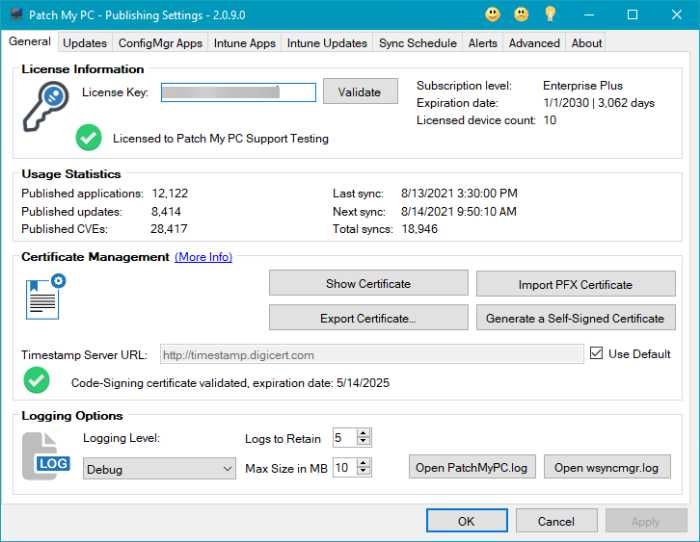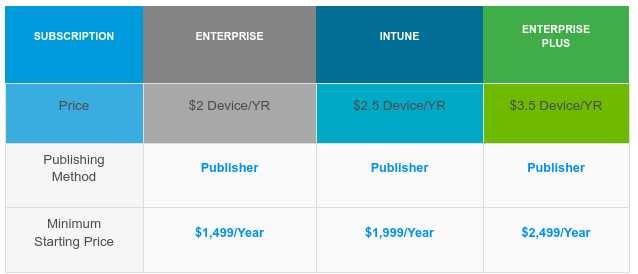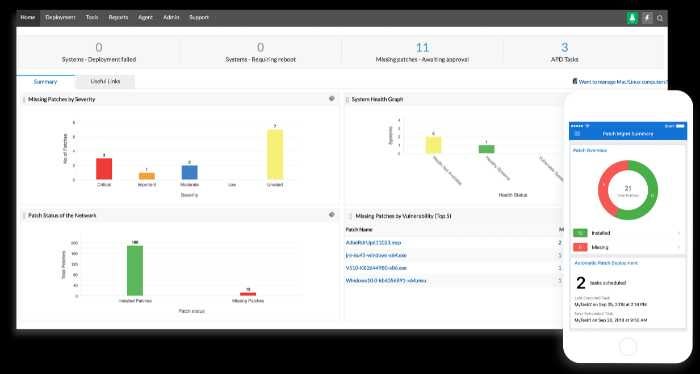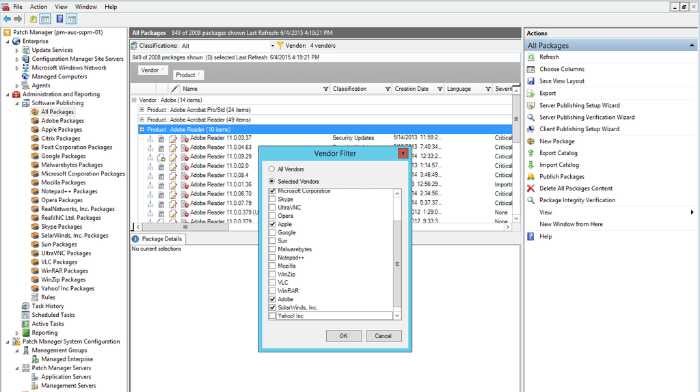Keeping your software and IT infrastructure up to date is critical in an age where cyberattacks have become commonplace. The best way to do this is via patch management software.
A patch management solution monitors and maintains software updates, ensuring that your business is protected against potential cyberattacks.
Table of Contents
Leading Patch Management Solutions
What is Patch Management?
A software patch is a small piece of software that fixes or improves an existing program. The origin of the term “software patching” can be traced back to the early computing days in the 1940s when programmers punched computer code into a paper tape, and patches were literally pieces of tape that were stuck over the holes to correct the code.
Nowadays, patches come in digital form and are released by software vendors to fix or improve an existing program by addressing vulnerabilities, bugs, and other issues in their products. To put it simply, patch management is the process of installing these patches on your computing devices.
IT managers and security specialists use patch management tools to ensure the components of their company’s software stack and IT infrastructure are up to date. These tools track software and middleware updates and then automatically alert users or execute the updates. As a result, an employee’s responsibility to update software and remediate vulnerabilities is reduced.
To be regarded as a patch management solution, the tool must meet three critical criteria:
- Maintain a database of software updates, middleware upgrades, and hardware upgrades.
- Automatically notify users of new updates or automatically apply the patch.
- Notify administrators of endpoints and users utilizing out-of-date software.
Also read: Cybersecurity Awareness for Employees: Best Practices
Why is Patch Management Important?
One of the most essential functions of patch management is to mitigate the risk of cyberattacks. According to a report by IBM and the Ponemon Institute, the average cost of a data breach for enterprises in 2021 was $4.24 million, up 10% from 2020.

(Image source: IBM.com)
The report also found that the average time it takes to detect and contain a data breach is 287 days. By keeping your software up to date, you can significantly reduce the risk of a data breach and the costly consequences that come with it.
In addition to mitigating the risk of cyberattacks, patch management also helps organizations adhere to compliance regulations. For example, the Payment Card Industry Data Security Standard (PCI DSS) requires companies to implement a patch management process to maintain the security of their systems.
Patch management is also crucial for the stability and performance of compute systems. Out-of-date software can lead to system crashes and other stability issues.
Best Patch Management Software Solutions in 2022
Here are five of the best patch management software solutions available in 2022.
Patch My PC

Patch My PC is a tool that helps enterprises using Microsoft Configuration Manager or Microsoft Intune to keep their third-party software up to date. The company has a great track record of success. In 2021, 3,792 third-party updates were released by Patch My PC, including 1,128 security fixes and 1,412 Common Vulnerabilities and Exposures (CVEs).
Features
- Create SCCM and Intune Applications: Beyond patching, you can create applications for the initial deployment of solutions in Microsoft SCCM and Intune. It includes icons, keywords, a description, and much more.
- Auto-Update Applications: Patch My PC will automatically update applications when a new patch is released. Updates are downloaded, extracted, and installed, all without user interaction.
- Deploy Using Task Sequences or Collections: Easily deploy applications using Task Sequences in SCCM or Collections in Intune.
- Run Custom Scripts: Sometimes, you need to do more than patch an application. With Patch My PC, you can run custom scripts before and after installations.
- Disable Self-Updates for Applications: Disable self-updates for applications you do not want to be automatically updated.
- Enable Standard Logging for Installations: Get detailed information about every installation with standard logging enabled.
Pros
- Low-cost solution per device
- Easy to configure and navigate
- Timesaver when it comes to patching common applications
- Excellent support
Cons
- Creating “customized” packages such as Cisco AnyConnect is complicated for new users.
Pricing
Patch My PC has three pricing tiers, as shown below.

Each plan comes with a 30-day free trial. You can also book a product demo before signing up for the free trial.
Symantec Endpoint Management

Symantec Endpoint Management, acquired by Broadcom in 2019, is a patch management solution that helps organizations of all sizes secure and manage their endpoints. Broadcom has over 50 years of experience in the technology space and has millions of customers worldwide.
Features
- Centralized Patch Management: Symantec Endpoint Management provides a single view for managing patches and updates for all endpoints in your organization.
- Automated Patching: The tool can automate the patching process for both Microsoft and third-party applications.
- Intuitive Dashboard: The Symantec Endpoint Management dashboard provides a snapshot of the health of your endpoints and allows you to take action quickly if needed.
- Security Intelligence: The tool includes security intelligence features that allow you to see the latest threats and how they are impacting your organization.
- Integrated Endpoint Protection: Symantec Endpoint Management includes integrated endpoint protection features to help you secure your endpoints.
- Real-time and historical data: Real-time actionable compliance reports allow you to make quick, informed decisions to keep your environment secure, while automation reduces costs even more.
Pros
- Broadcom’s experience and expertise
- In-depth security intelligence
- Real-time reporting
Cons
- It can be slow when multiple users are on the console.
Pricing
The company does not publish pricing information on its website but provides potential customers with a dedicated page to find a partner or distributor.
ManageEngine Patch Manager Plus

ManageEngine Patch Manager scans endpoints to discover missing patches, validates patches before deployment to eliminate security risks, and automates patch rollout to operating systems and third-party applications for improved visibility and control.
The company is the IT management division of Zoho Corporation and has over 120 award-winning IT products and tools.
Features
- Automated Patch Management: The patch management process is automated for Microsoft and third-party applications.
- Cross-Platform Support: ManageEngine Patch Manager supports Windows, Mac, Linux, and VMware operating systems.
- Test & Approve Patches: Patches are validated before deployment to eliminate security risks.
- Ensure Patch Compliance: ManageEngine Patch Manager tracks patch compliance and generates insightful reports.
- Remote Patch Management: ManageEngine Patch Manager enables you to manage patches for devices not on the local network.
Pros
- Intuitive and straightforward dashboard design
- Good customer support
- Excellent cross-platform support
- Relatively inexpensive compared to competitors
Cons
- It does not allow you to select software updates by the user, only by machine.
Pricing
ManageEngine Patch Manager Plus has several pricing points depending on the number of devices and whether you want an on-premises or cloud solution.
SolarWinds Patch Manager

SolarWinds Patch Manager makes deploying updates on tens of thousands of servers and workstations quick and straightforward. It also allows you to utilize and expand on Microsoft WSUS or SCCM’s reporting, deployment, and management capabilities for both third-party and Microsoft patches.
Serving 498 of the Fortune 500, the Austin, Texas-based company has been in business for over 20 years.
Features
- Microsoft WSUS Patch Management: It helps simplify the whole WSUS patch management process, from patch notification and synchronization to approvals and deployment.
- Integrations with SCCM: It integrates with Microsoft’s System Center Configuration Manager (SCCM) for comprehensive patch management across heterogeneous environments.
- Third-Party Application Patching: SolarWinds Patch Manager enables you to patch third-party applications and the regular Microsoft updates.
- Prebuilt/Pretested Packages: It reduces deployment time and risk by providing prebuilt, pretested software update packages.
- Patch Compliance Reports: SolarWinds Patch Manager tracks patch compliance and generates insightful reports.
- Patch Status Dashboard: The platform provides at-a-glance information on the health of your patching operations.
Pros
- Comprehensive feature set
- Good customer support
- Easy to demonstrate compliance with out-of-the-box reports and dashboard views
- Good integration with other SolarWinds products
- Vibrant 150,000+ user community
Cons
- It’s difficult to push out third-party updates that are not officially approved by SolarWinds.
Pricing
SolarWinds Patch Manager has two licensing options, subscription or perpetual, which is based on the number of nodes, or endpoints, managed. Subscription pricing starts at $2,006, while perpetual licensing starts at $3,997. The company also offers a fully functional 30-day free trial.
PDQ Deploy

Established in 2001, PDQ Deploy is a Salt Lake City, Utah-based patch management software designed to help you automate the process. You can update third-party programs and script deployment and make significant system modifications in just a few minutes.
Users may select the software they wish to install and, if necessary, update specific machines and establish their desired schedule for deployment. PDQ will automatically and quietly apply updates once the deployment has been scheduled without disrupting end users.
PDQ Deploy works best in combination with PDQ Inventory, which scans, identifies, and removes undesired or out-of-date applications deployed by your end users.
Features
- Schedule Remote Multi-Step, Multi-Application Custom Deployments: You can update programs on your computers on your preferred schedule, even if you’re away from the office.
- Execute Commands, Run Scripts, and Force Reboots: With just a few clicks, you can deploy software, reboot machines, and run scripts. This is a powerful tool for admins who need to make changes or repairs on many devices quickly.
- 250+ Ready-to-Deploy Common Applications: PDQ Deploy has a library of over 250+ common applications ready-to-deploy. This eliminates the need for you to hunt for software updates and makes the deployment process quick and easy.
- Automatic Retry: If a deployment fails for any reason, PDQ Deploy will automatically try again.
- Email Status Updates: Get email updates on the progress of your deployments, allowing you to stay informed on the go.
- Deploy Using Active Directory, Spiceworks, and PDQ Inventory: You can deploy software to your machines using Active Directory, Spiceworks, or PDQ Inventory. This gives you flexibility and choice when it comes to deployment.
Pros
- Ease of use
- Frequent updates
- Comprehensive PDQ library
- Good customer support that includes community forums
Cons
- Sometimes, very large packages fail.
Pricing
PDQ Deploy offers three pricing tiers as follows:
- We ❤ Underdogs: $1,275 per admin per year
- Deploy + Inventory: $1,500 per admin per year
- Enterprise: For more than 15 licenses, customers can get a custom pricing plan
All plans come with a 14-day free trial.
How to Choose Patch Management Software
Ultimately, the decision of which patch management software to choose depends on your organization’s specific needs. However, based on our analysis of the top five tools, a few key factors emerge.
- Ease of Use: The patch management software should be easy to use, even for those who are not tech-savvy.
- Frequent Updates: The software should be frequently updated to ensure that you have the latest security patches and features.
- Comprehensive Library: The software should have a comprehensive library of software updates, so you do not have to hunt for them yourself.
- Good Customer Support: The software should come with good customer support, including community forums where you can get help from other users.
- Price: The software should be affordable for your organization but not the sole determinant. It should also come with a free trial to allow you to try it before you buy.
We hope that this article has helped you understand the basics of patch management and given you a few points to consider as you make your decision. At the very least, we hope you better understand the importance of patch management and why it should be a critical part of your security strategy.
Read next: Top Digital and Computer Forensics Tools & Software 2022


